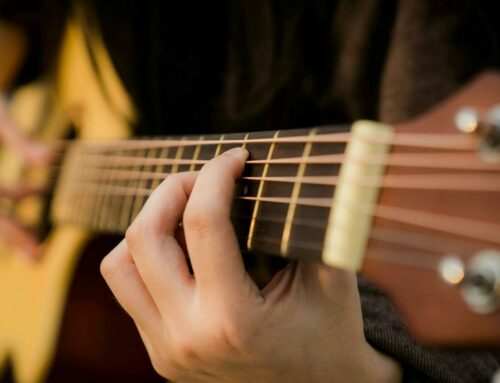
How to Hold a Guitar
Imagine this: you’re cranking out your favourite riff, head bobbing, air guitar skills finally translating to the real deal. But then, a pang shoots up your wrist, followed by a dull ache in your back. That dream turns into a nightmare pretty fast. Proper guitar posture isn’t just about looking cool (though let’s be honest, it helps), it’s the foundation of comfortable, frustration-free playing.
Here’s the thing: most websites tell you the basics: the right leg, the body curve, the fretting hand. But what about the hidden secrets that can make a world of difference when learning how to hold a guitar?
Here, we’ll delve into the often-missed aspects of guitar posture, giving you that extra edge to avoid injury and maximize your playing potential. By the end of this, you’ll be shredding those strings with the posture of a seasoned pro (minus the years of practice, but hey, that’s what we’re working on, right?).
Citing our Sources:
Throughout this article, we’ll be referencing info from established guitar resources like JustinGuitar.com and fretjam.com.
The Secret Weapon: Your Picking Arm
We’ve all seen the image: the guitarist with their strumming arm draped casually across the body of the acoustic guitar. It looks effortless, right? Well, for short bursts, maybe. But that picture-perfect pose can wreak havoc on your shoulder and wrist over time. Here’s the secret: think support, not weight.
Imagine your picking arm as a bridge between you and the guitar. The forearm should rest gently on the guitar’s body (acoustic) or be angled slightly across the top (electric) [fretjam.com]. The key is, your shoulder shouldn’t be holding the weight of your arm. This might mean rolling up your sleeves for better grip and keeping your back straight. Trust us, your future self will thank you.
The Neck Angle:
You’ve got the right leg position down, the body curve feels good. But wait, why are your fingers struggling to reach those frets? This could be due to a sneaky posture culprit: the neck angle. Most sites will tell you to keep your fretting hand arm at a 90-degree angle.
But did you know a slight adjustment can make a big difference? Try angling your fret hand slightly towards the headstock (that’s the bit with the tuning pegs). This opens up easier access to the fretboard, especially for those tricky barre chords down the line [JustinGuitar.com].
The Final Touch on How to Hold a Guitar:
We all focus on the guitar placement, but have you considered your other foot? Believe it or not, your non-dominant foot also plays a role in maintaining good posture. If you find yourself hunching forward, try using a footstool. Elevating your foot slightly creates a more balanced posture and takes pressure off your lower back [JustinGuitar.com].
Remember, comfort is king (or queen) when it comes to guitar playing and holding a guitar. Don’t be afraid to experiment and find what feels best for you. By incorporating these often-missed posture tips, you’ll be well on your way to pain-free playing and mastering those guitar skills you’ve always dreamed of.
Noel Wentworth offers online and in-person Guitar Lessons at the Upbeat Music Academy Kelowna






